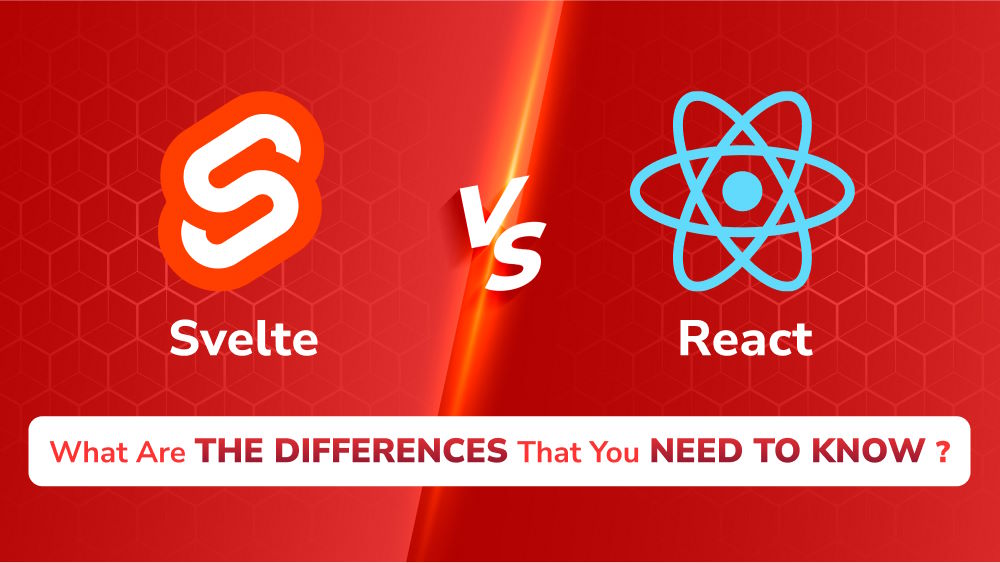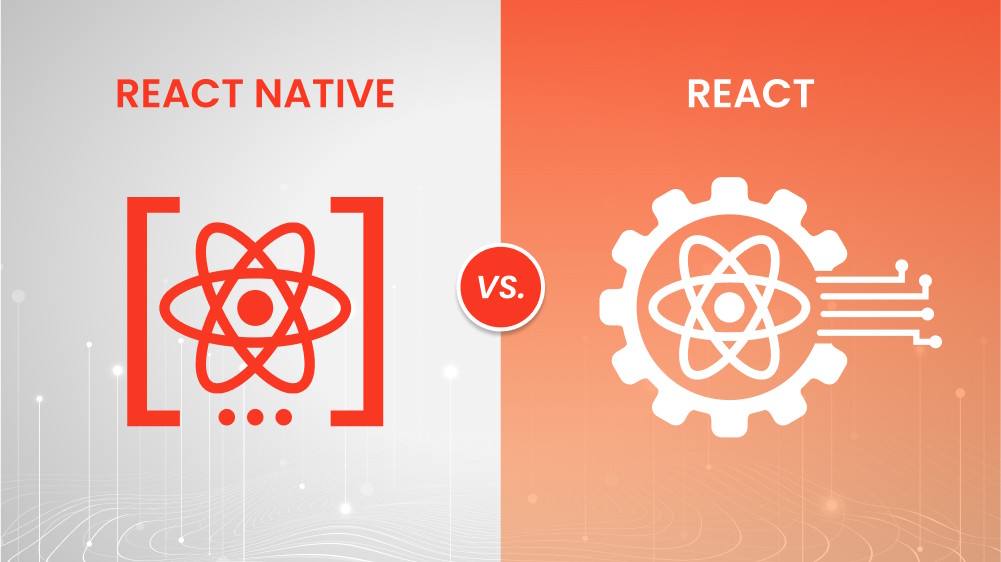
React Can’t Keep Up? Five High-Performance React Alternatives for Real-Time Data Streams
React is strong, though, when it comes to high-frequency data; its virtual DOM may not last. In this article, we will discuss the 5 alternatives (Preact/Inferno, SolidJS, Angular Signals, Vanilla JS/Web Components, and Qwik) to React, which are designed to deal with heavy data streams, providing better performance and speed in the areas where React fails to perform adequately.

Content Map
More chaptersRecent estimates show that the world is currently producing more than 2.5 quintillion bytes of data on a daily basis; large quantities of this data should be processed in real time to guide decision-making and user experiences. In this kind of an environment, the potential to realize and visualize high-frequency data streams instantly has turned into a highly valued competitive weapon.
React has long been the unquestioned front-end development framework due to its intuitive and developer-friendly component-based approach and ecosystem. It performs exquisitely in generating intricate, proactive user interfaces for a comprehensive majority of web applications. Nevertheless, in the case of high-frequency data where milliseconds matter, and thousands of updates are happening in one second, the inherent mechanisms of React components, including and especially the part of Virtual DOM reconciliation, can become a source of performance problems.
Although some problems can be alleviated with clever optimization tricks, trying to take React to the very edges of what it can handle with regard to real-time responsiveness can sometimes seem like an uphill battle. As a matter of fact, unnecessary re-renders have been found to be a typical performance culprit in React and have influenced CPU utilization in 75% of applications, and the re-rendering of the unnecessary components can slow down the application performance to half or less.
This article isn’t about dismissing React’s strengths but rather about acknowledging its specific limitations in highly specialized, performance-critical scenarios. We are going to explore five modern frontend frameworks and methods that are specifically designed to work with a load of live data and provide extremely fast, user-responsive dashboards. Are you working on an app that needs constant-running times, and your existing React stack is making you feel like it’s struggling to breathe? Then, come with us as we look at the React alternatives that can transform your data feeds into real-time insights.
Why Real-Time Breaks Conventional Frameworks
Developing applications that can seamlessly process and render high-frequency data streams comes with a whole new set of challenges that thrust conventional front-end frameworks, even popular ones such as React, out of the design comfort zone.
React Pain-Points in Real-Time Scenarios
The architecture of React, while robust in handling the traditional application, experiences heavy stress when a real-time condition is imposed on it. The essence of the problem lies in its rendering model.
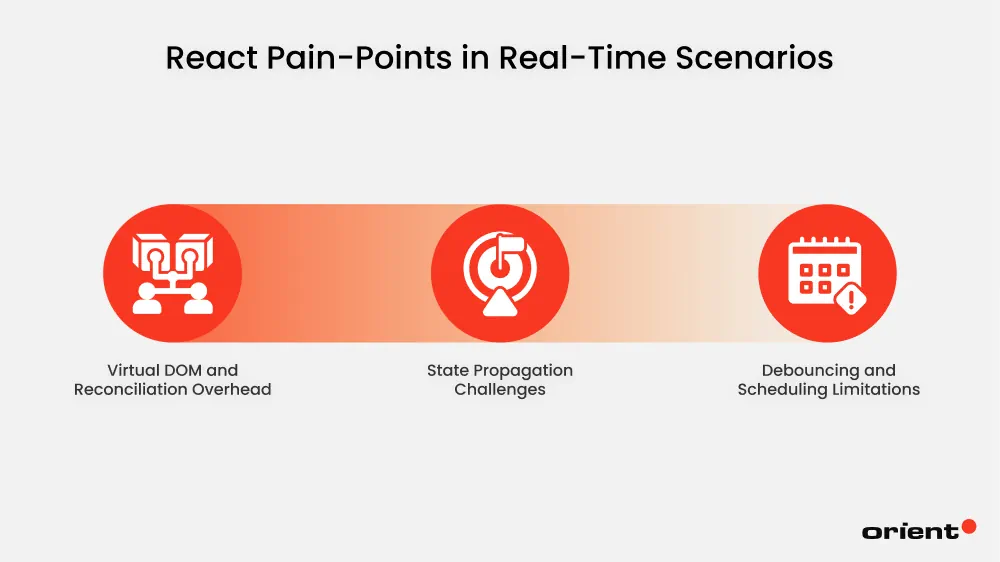
Virtual DOM and Reconciliation Overhead
React uses a virtual DOM to reduce direct manipulation of the DOM. Although this is adequate in moderate updates, it creates friction in high-frequency changes of the states. Each change to the state causes diffing the new and old trees of the Virtual DOM. With updates many tens or hundreds of times per second, as in live dashboards, multiplayer games, or simultaneous editing editors, the reconciliation loop is barely able to catch up. Even a small change can cause unnecessary re-rendering of the parts not involved directly, causing the problem, particularly on strongly nested trees.
State Propagation Challenges
The top-to-bottom broadcasting of state changes is a feature of the React state management model, specifically the Context API or Redux. In an environment like a real-time application, this may unnecessarily cause many parts of the application to be re-rendered many times unless developers go out of their way to perform memoization techniques (React.memo, selectors, useCallback, and so on). These mitigations are costly in terms of code complexity and fragile at scale. Moreover, a property of real-time data interacting with different regions of the UI can also make dependency tracking and update throttling a fuzzier problem.
Debouncing and Scheduling Limitations
The default rendering loop of React is not optimized towards frame rate-driven control. Some scheduling ability exists in features such as concurrent mode and useTransition, but these are still reliant on the cooperative behavior of the runtime. This may not be enough in low-latency UIs where a couple of dropped frames would be noticeable as lag.
Generic Frontend Constraints
Not only is it a challenge to frameworks such as React, but real-time applications also reveal the more fundamental shortcomings of frontend environments.
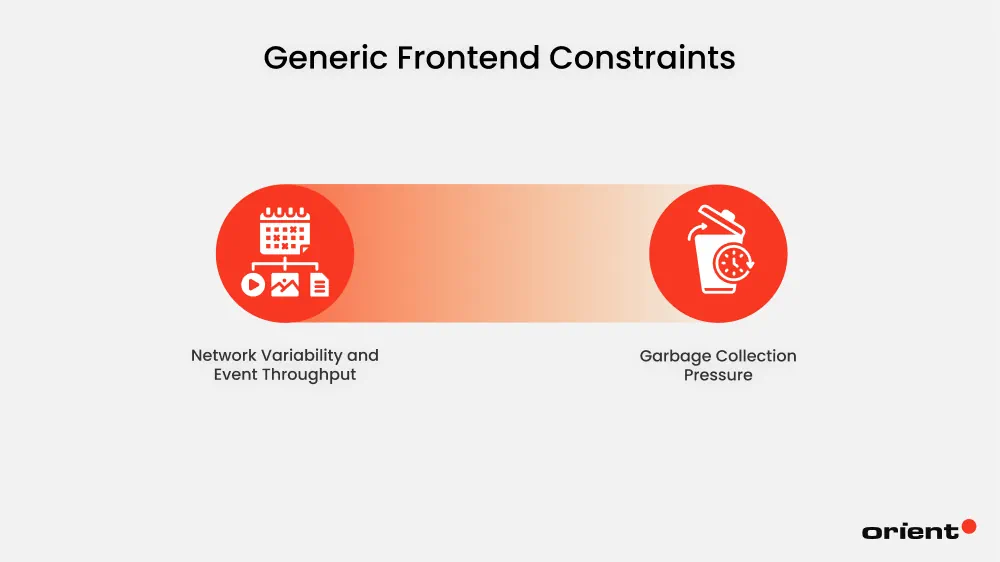
Network Variability and Event Throughput
WebSocket-based data delivery used in real-time configurations is prone to changing latency, congestion, and packet drops. In contrast to RESTful APIs, real-time streams can provide tens or hundreds of events a second. These have to be parsed, diffed, and applied with a short delay by the front-end frameworks. When the UI must wait on intermediate parsing of JSON or complicated reducers per event, any message delivery latency has an immediate and direct user-facing impact on performance.
Garbage Collection Pressure
Frequent large state updates can make short-lived object closures, DOM nodes, stale component trees, and intermediate props. JavaScript memory models and generational garbage collectors aim to clean these up as efficiently as possible but, when under load, trigger minor or even major GC cycles. This causes temporary script stalls and UI jank. The cost increases when you have a framework based on numerous temporary allocations of memory during reconciliation, such as React.
Micro-Benchmark: Real-Time Update Stress Test
The following micro-benchmark shows the average frame rate and memory pressure in each framework and updated 1000 DOM-bound components at 60 Hz over a WebSocket data source:
| Framework | Avg FPS (Target: 60) | GC Events (per min) | Latency (ms/frame) | Heading |
|---|---|---|---|---|
| React (18.2) | 36 | ~20 | ~14ms | Noticeable UI stutters on spikes |
| Vue 3 | 52 | ~12 | ~7ms | Better scoped reactivity |
| SolidJS | 59 | ~4 | ~3ms | Fine-grained reactivity shines |
This benchmark shows that optimized conventional frameworks such as React are not able to become responsive when faced with constantly high-frequency update rates. Paradigms that react at a lower granularity, such as signals and subscriptions, are available, and they have more predictable performance and less tuning.
Key Characteristics for High-Frequency Data & Real-time Data Streams
When choosing a front-end framework to work with applications that require the fast handling and displaying of high-frequency data, a few technical features are most important. The following are the key characteristics that enable an interface to be smooth and responsive under heavy load, which separates a truly performant solution from those that can barely keep up.
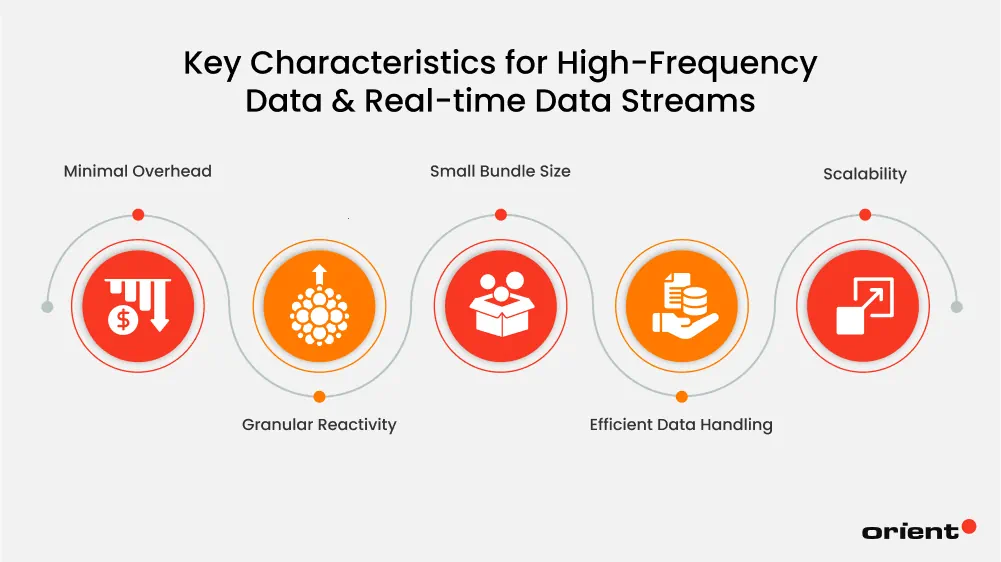
Minimal Overhead
Performance-sensitive applications attempt to reduce the cost of running through prioritization of direct DOM manipulation or the use of high-performance compilers via highly optimized JavaScript. These programming frameworks, such as Svelte or Vanilla JS, reside more directly on top of the browser and don’t need some heavyweight abstraction. The effect of this is a more rapid update of the UI with little intermediate processing being necessary, which is vital in displaying dynamically changing datasets, i.e., live stock tickers or telemetry information.
Granular Reactivity
Rather than re-rendering the entire component on data change, newer systems perform fine-grained reactivity with small reactivity scopes on the data-changed components. Batteries such as SolidJS or MobX have the ability to very accurately track and update dependencies of state so that it does not update the entire DOM. This results in the continued use of steady frame rates even where this is regularly entered through bursts of data inflow, maintaining responsiveness of the UI.
Small Bundle Size
Bundles JavaScript Greenfield; optimizing the size of JavaScript packages speeds up initial loading and the parsing overhead and becomes particularly crucial in settings where users require prompt access to live data. Using such tools as esbuild and Rollup will remove unused code (tree-shaking) and compress the scripts, providing a faster boot-up and making the Time to Interactive (TTI) short, which is essential in dashboards, where people can make fast decisions.
Efficient Data Handling
It is common to see high-velocity data streams being ingested by real-time dashboards, thus requiring solid data pipelines and intelligent batching strategies. To efficiently render large datasets, it is important to implement coding features such as virtualized lists, indexed rendering, and techniques to prevent UI deterioration. WebSockets and streaming APIs are both typically used to keep data channels between the interface and the backend in a low-latency, persistent state so that the interface mirrors the backend state.
Scalability
Horizontally and vertically scaling is essential as the number of users accessing the services and the amount of data they generate increase. This involves distributed architectures capable of serving multiple WebSocket requests at once, in-memory data stores such as Redis to coordinate shared state across requests on the same device, and always client-side capabilities that perform graceful degradation depending on device support. When it comes to the front end, component rendering should be high-performance at all user concurrency, and there needs to be well-scaled performance across an increasingly large base.
In the world of real-time applications, being fast isn’t enough—you have to stay fast every frame. The structural decisions followed by the traditional structures were not designed to handle this kind of workload, and developers are beginning to feel those cracks. Want to explore how newer reactive compilers handle this differently? I’d be happy to take you further.
Top 5 React Competitors for Performance-Critical Dashboards
SolidJS

How it works: SolidJS has the advantage of using no virtual DOM and replacing it with a “fine-grained reactivity” system. Although it follows the JSX syntax, it has a compiler that converts JSX to very optimized and vanilla JavaScript code, which updates the DOM directly. Changes to a part of the reactive state tell SolidJS exactly which part of the DOM is updated and update only this part of the DOM, bypassing calling component functions and not requiring diffing a tree. It allows you to have a direct and surgical relationship between your data and the UI.
Why it excels in real-time: The key strength of its real-time data processing is the fine-grained reactivity. There is no overhead to manage a virtual DOM because changes are minimal and direct. This results in outstanding performance standards that usually outperform other frameworks when it comes to raw speed. In dashboards with point-level data constantly streaming through, it is required that the UI be tremendously responsive and not result in extraneous re-renders that would otherwise lead to “jank.” Fast load times are also facilitated by its small size at runtime (around 5KB gzipped).
Use Cases: It is ideal in applications that are very performance-sensitive and excessively dynamic:
- Advanced trading environments have live charts and order books.
- Dashboards in real time showing sensor data of industrial IoT.
- Interaction data visualizations that demand the most liquid updates.
- Any application with responsiveness to data in its UI being number one.
Pros & Cons:
- Pros: Lightning speed execution as having no Virtual DOM and fine-grained reactivity, familiarity with the JSX syntax, a very light bundle size, and a good developer experience after mastering.
- Cons: A different mental model to reactivity than React (but it is well-documented); a small ecosystem and community relative to React/Vue/Angular; can feel “too low-level” to handle simple static UIs.
Angular Signals (v18)
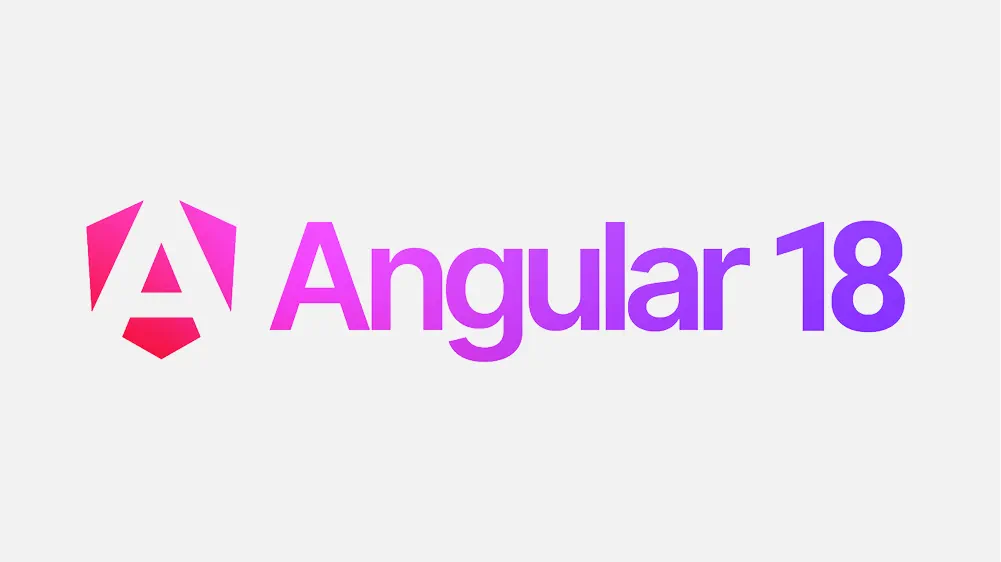
How it works: Although Angular has traditionally used Zone.js to implement change detection (which can be quite broad), the advent of Signals (entirely stable as of Angular v17, with additional improvements in v18) makes a fundamental change towards fine-grained reactivity. Signals are a type of value wrapping that notifies any components of the application depending on the value when the value changes. This helps Angular not run change detection throughout the whole component tree but only update the particular portions of the UI that actually need to be changed overall since a signal has changed. It delivers a more simultaneous and effective management of state changes.
Why it excels for real-time: Signals are able to address the historical performance limitations that exist in Angular in very dynamic applications. This is especially helpful when it comes to optimizing real-time dashboards, as fewer manipulations of the DOM and processing of the CPU cycles are carried out. Zone.js may still be used (depending on configuration), but signals may be seen as an avenue to much more responsive, data-intensive views because reactivity is turned off at will.
Use Cases: For Angular projects that require working with the stream of real-time data smoothly:
- Dashboards of an enterprise level with several streams of data and complicated interactions of components.
- Apps binding to backend services that shove live updates (e.g., WebSockets).
- Any Angular application that is currently active and the performance of which upgrading with dynamic data is a high priority.
Pros & Cons:
- Pros: Native Angular solution, high-performance improvements enabled by fine-grained reactivity, strong types, extensive capabilities via the framework, and a vast enterprise ecosystem.
- Cons: Still a larger framework overall than lightweight alternatives, learning curve if not familiar with Angular, and the full power of Signals may need a migration of existing code.
Preact / Inferno (Lightweight Alternatives)

How it works: Preact and Inferno gain their speed optimization by devising the Virtual DOM reconciliation process. An example is Preact, which strives to be as small and quick as possible by dropping features that are less frequently utilized and optimizing its diffing algorithm. Inferno takes it one step further, having an extremely optimized, bespoke implementation of the Virtual DOM, which generally wins raw rendering speed performance comparisons to React. They do employ a virtual DOM, though their implementations are designed to minimize its overhead.
Why it excels for real-time: They have reduced bundle sizes, such as Preact (around 4 KB) and Inferno a little bit bigger but still minuscule compared to React, which also decreases the load time. More importantly, their well-optimized implementations of Virtual DOM promote more cost-effective updates. In the case of high data-change frequency, their diffing algorithms are optimized to detect and process DOM changes with as little computation cost as possible, a task that frequently comes with increased frame rates and smoother user interactions than a comparable React configuration with similar traffic load.
Use Cases: Great when you want the easy-to-use component model that React offers, but you need better performance in the renderer and wish to spend less space, like:
- Live-updating stocks or crypto indicators.
- Data grids that are interactive and frequently changing cells.
- Applications on resource-limited systems such as mobile web or embedded systems.
- Projects in which a gradual migration of an existing React codebase is sought after
Pros & Cons:
- Pros: High performance, minimal bundle size, React-like API (ease of use), and active development.
- Cons: Retains a virtual DOM (though extremely optimized), smaller ecosystems than full React, and may not support the latest React functionality (e.g., Concurrent Mode).
Vanilla JavaScript / Web Components (with Lit)

How it works: It takes a direct approach to leveraging the native capabilities of the web platform, as opposed to using significant third-party frameworks. Vanilla JavaScript means writing plain codes that are called browser DOM APIs. Web Components allow to build reusable, encapsulated user interface components with their own HTML, CSS, and JavaScript, with full native browser support. Standards such as Web Components are then expanded into libraries such as Lit, which offer an efficient way to declare reactive components with low-cost templating.
Why it excels for real-time: Vanilla JS (Lit) provides the lowest possible overhead since no framework runtime is to worry about. You are in total control of updating the DOM, and this results in peak performance. Lit (~5KB gzipped) is also extremely efficient when creating reactive Web Components that will take advantage of the fact that Lit will only update those elements in your template that are dynamic. This does not impose any overhead on Virtual DOM.
Use Cases:
- Exceptional performance prerequisites, bespoke high-performance data visualization,
- Making reusable frames of UI libraries that might be frameworkless
- Advancement of existing unchanging sites with live data.
Pros & Cons:
- Pros: Ultimate performance control (Vanilla JS/Lit), extremely small bundle sizes, framework independence, future-proof (Web Components are a web standard)
- Cons: More boilerplate code (Vanilla JS), steeper learning curve for complex UIs without a full framework, smaller feature sets compared to comprehensive frameworks, ecosystem of pre-built UI components is less vast than React/Angular/Vue.
Qwik
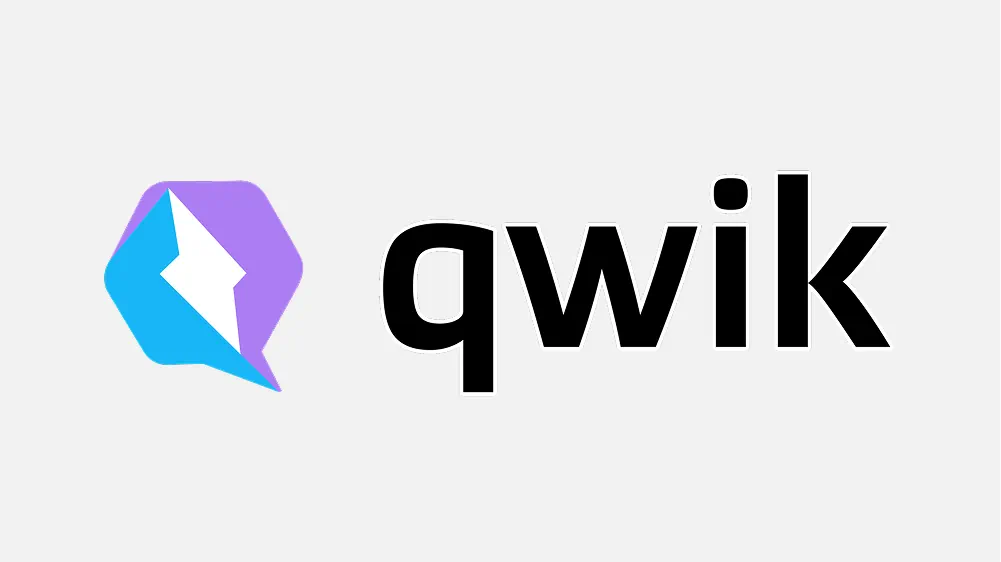
How it works: Qwik proposes the idea of “resumability,” which is quite the opposite of other frontend frameworks. Rather than re-executing all of the JavaScript on the client after server-side rendering, Qwik records the execution state of the application in HTML. When the page is loaded by the browser, Qwik continues to execute at the same point the server execution had stopped, downloading and executing only the bare minimum JavaScript necessary to support the user interaction of that line. Even event listeners are loaded like this (lazily).
Why it excels for real-time: The main advantage of Qwik is that the startup time was improved to the point of being nearly instant. In the case of real-time dashboards, it implies the users can interact with the first data much quicker since very minimal JavaScript code is to be formatted or run in advance. Once started, data updates that must occur in real-time through Qwik will result in the download and execution of only the particular code involved in the changes. This just-in-time model of code execution sweeps away main thread blockages and garbage collection and results in very fluid update switching even with always arriving data streams because the browser is not clogged by the process of idle grasp and execution of code it never uses.
Use Cases: A good fit for cases in which high initial applying speed and greater responsiveness to events in real-time are of utmost significance, particularly on:
- Complex, interactive, large-scale real-time dashboards that the user may only interact with within certain areas.
- Any applications that are customer-facing and may require very good Core Web Vitals even in the case of dynamic data.
- Advanced SPAs require the incorporation of real-time feeds when perceived performance is important.
Pros & Cons:
- Pros: Unbeatable Time to Interactive (TTI), outstanding dynamic performance, tiny JavaScript download/execution, and intrinsic fine-grained reactivity.
- Cons: Radically different mental model (“resumability” takes time to grasp), a comparatively new concept with imperfect community and ecosystem, maturing.
How to Choose the Best Alternatives to React?
The question of how to choose the right React alternative that meets the requirements to implement a performance-critical dashboard is not merely the question of “How React alternatives compare in terms of performance and scalability?” It is about a harmony of technical features with the particular topography of your real-time application. We can unravel the most important decision criteria that can inform your own selection.
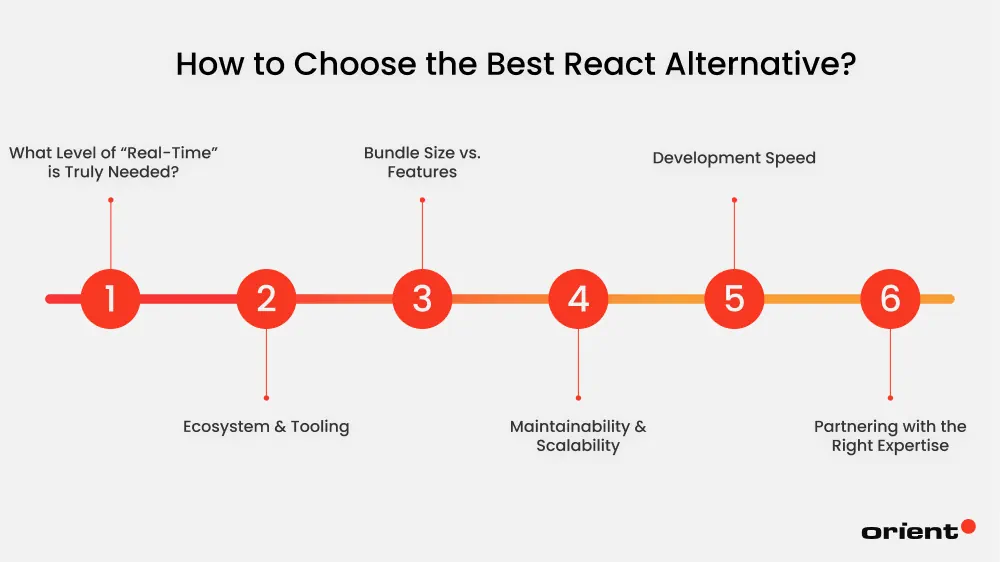
What Level of “Real-Time” is Truly Needed?
Real-time is a very relative word. In certain dashboards, updating every few seconds on data (e.g., network status monitors) is quite acceptable, and yet, dashboards such as stock trading terminals have to be responsive to a sub-second interval. Such frameworks as SolidJS or Inferno could be the best if we need microsecond-level updating of the DOM, and frameworks such as Qwik are the best choice if it is necessary to ensure the timely flow of the low-latency first renders of mobile and edge usage. Determine your update frequency, latency tolerance, and critical rendering paths before selecting a framework.
Ecosystem & Tooling
The quickest framework fails to meet the expectation of being considered an effective solution without including necessary integrations. Look at the richness of available libraries, component reuse support, compatibility with IntelliSense, and debugging tools. Take Angular Signals, for instance, which works well with the rich dev tooling provided by Angular, whereas Vanilla Web Components (particularly those using Lit or HTMX) require much more specialized tooling. It is a decision that teams already committed to some ecosystem should be cautious about migration costs (e.g., npm packages, tools to manage state).
Bundle Size vs. Features
The smaller bundles translate into quicker loads, particularly those that are low-powered networks. Preact and SolidJS are more than capable of teleporting in less than 10 KB, though being able to scale to much heavier bundles and to make up for enterprise-grade features, Angular leans in that direction, too. You must fulfill the right trade-off according to your audience. When your dashboard is running on kiosks or embedded devices, then a kilobyte matters. In internal tools for the enterprise, feature completeness may be an acceptable trade-off for having a heavier framework.
Maintainability & Scalability
The optimized performance is fantastic, but it has to live alongside clean code architecture and long-term supportability. Better-refactorable are the technologies that are strongly typed (such as Angular or SolidJS with TypeScript). Lightweight Vanilla JS stacks can be more demanding in terms of discipline coding to prevent the dreaded architectural sprawl. Think also of the ability of the solution to scale user sessions, data sources, and simultaneous interactions without compromising responsiveness.
Development Speed
The metric of time-to-market is essential. Frameworks that have pleasant ergonomics on the developer side, quick turnaround times, and good documentation (e.g., Preact or Qwik that support JSX) allow you to iterate faster. And on the other hand, hand-wiring reactivity in Vanilla JS—though performant—should not be used to slow down prototyping unless your group has significant experience. The option you decide to take should favor early experimentation as well as swift deployment cycles.
Partnering with the Right Expertise
Even the best tools can underperform when there is no expertise in their implementation. The selection of a modern framework is half the challenge, but the essential implementation with accurate intuition, optimized architecture, and maintainability requires expertise.
It is there that Orient Software comes in. With an established record of success in custom web application development, we are a team of experts in selecting the appropriate tools to use based on the problem being solved, ensuring that your application is not merely practical early in its life but can scale and weather the growth of your data store and the increase in your user base.
Never allow your technology set to be your bottleneck. Collaborate with Orient Software and turn your vision into performant, future-proof digital products that are designed and engineered to achieve real-world results. Once you are set to move swiftly and be smarter, we are the team to rely upon!





